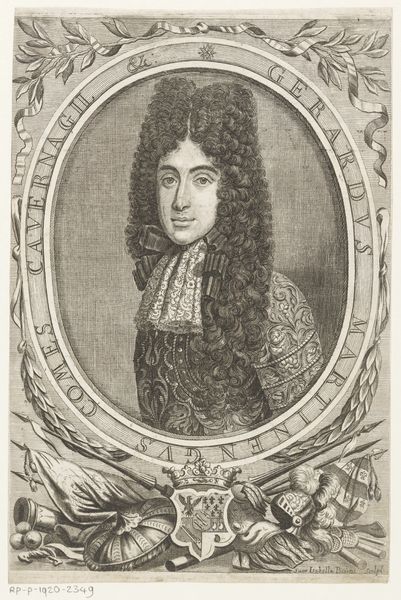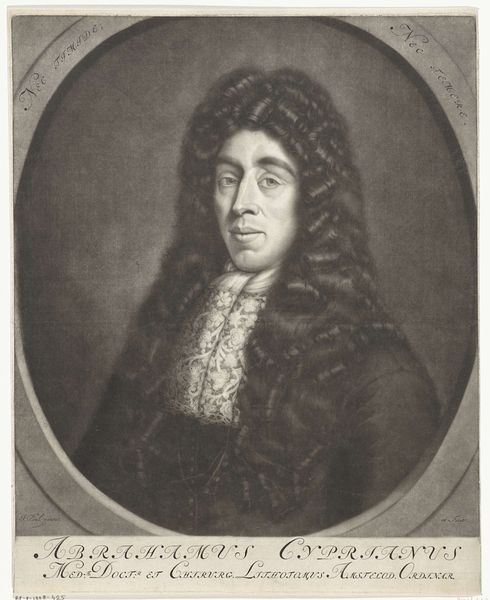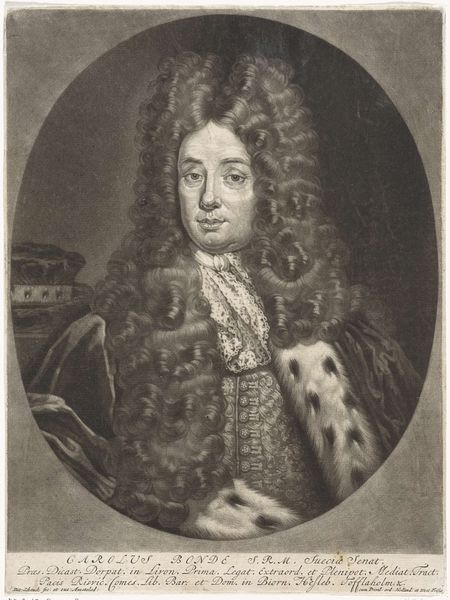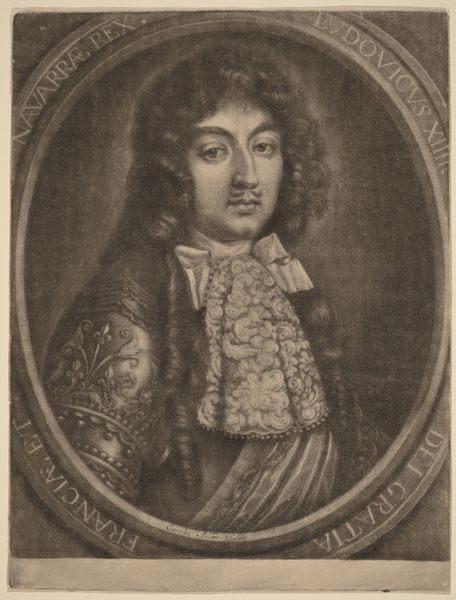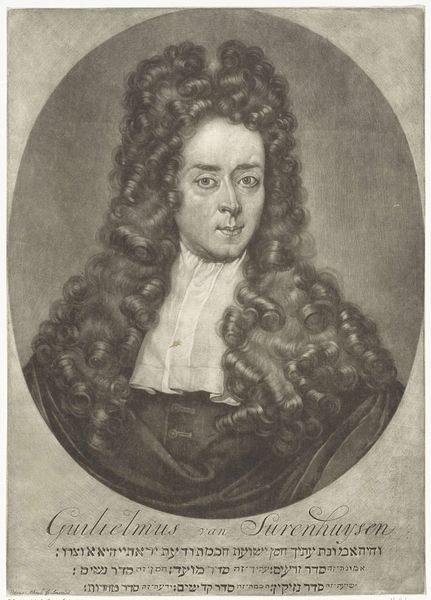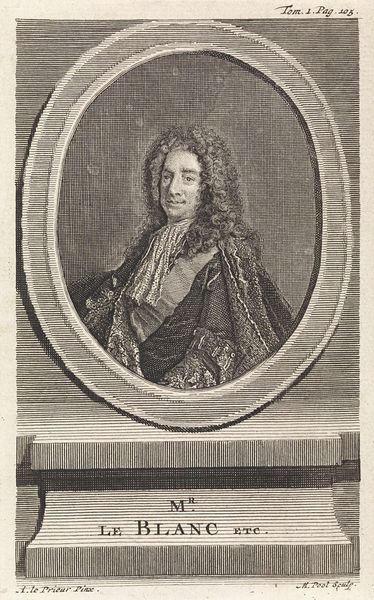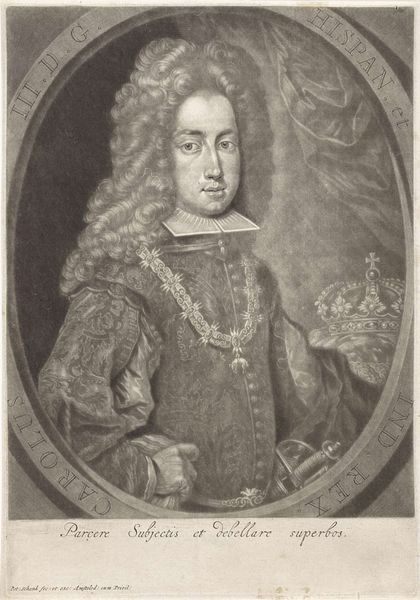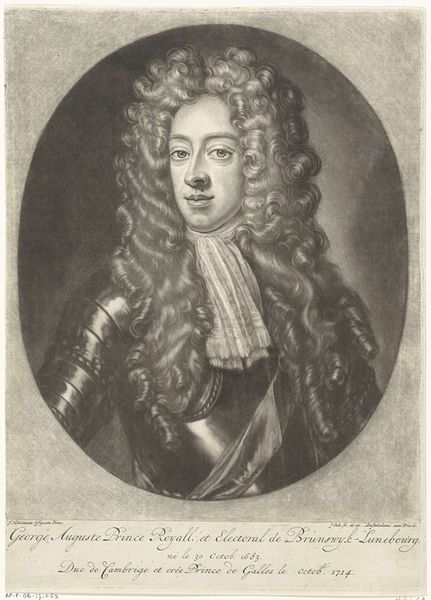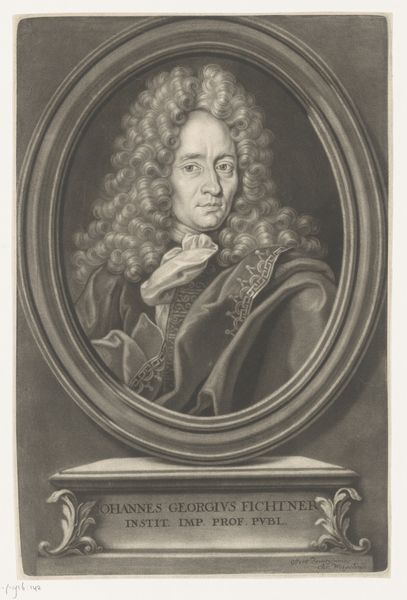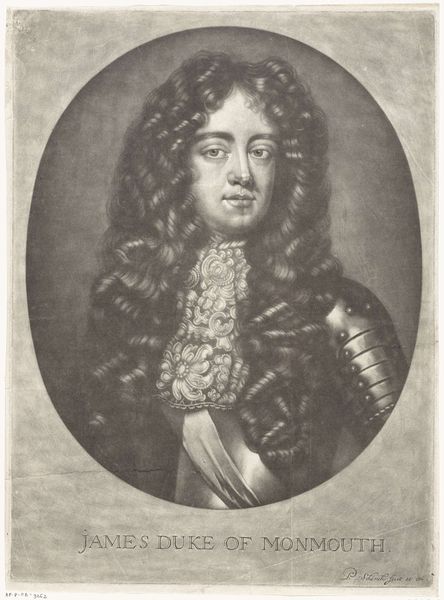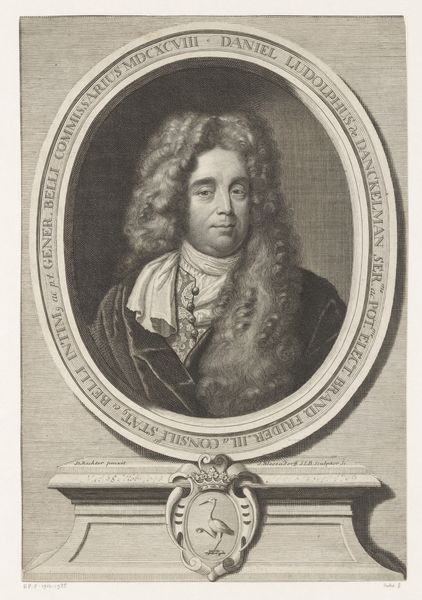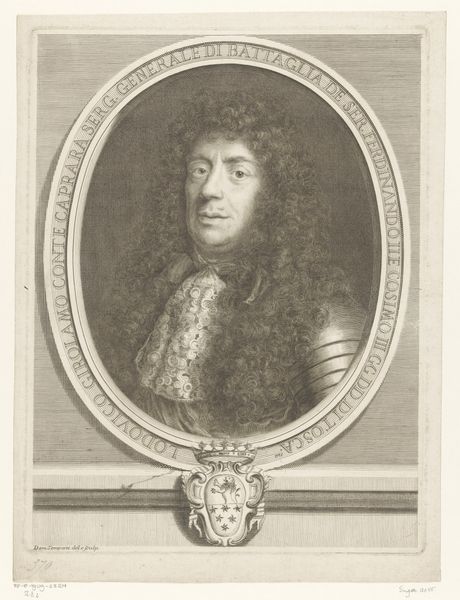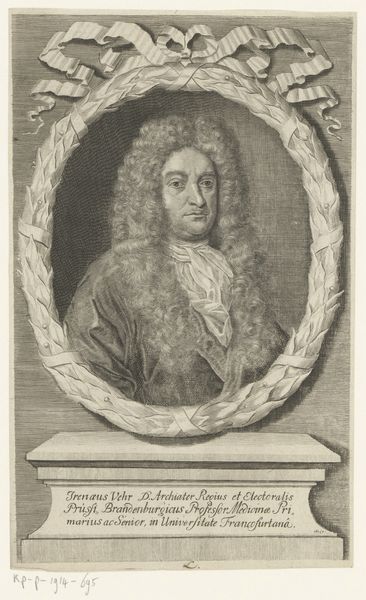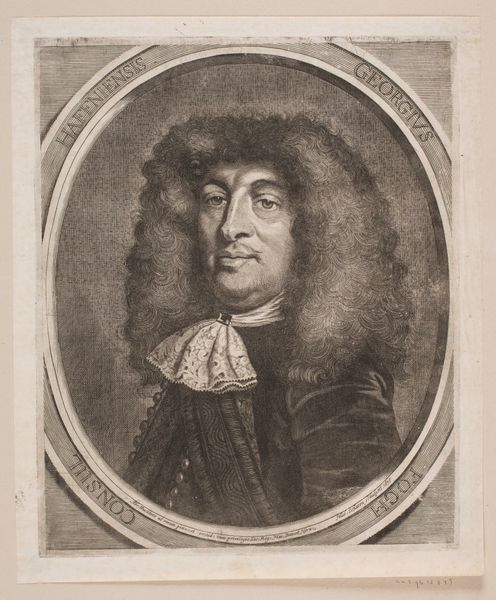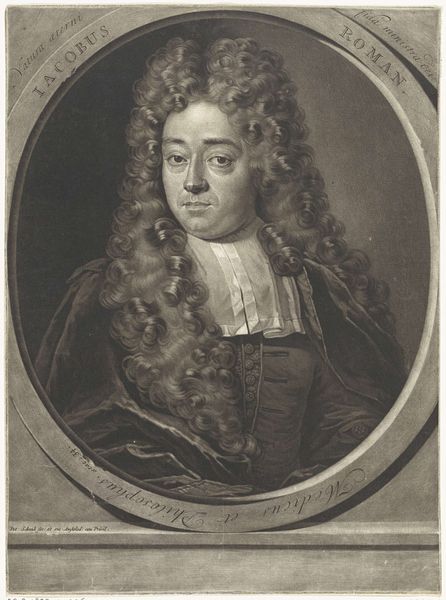
painting, oil-paint
#
portrait
#
baroque
#
painting
#
oil-paint
#
figuration
#
black and white
#
men
#
history-painting
Dimensions: Oval, 2 3/8 x 2 in. (60 x 50 mm)
Copyright: Public Domain
Curator: We’re looking at “Portrait of a Man,” an oil painting dating back to the late 17th century, sometime between 1685 and 1695. It’s currently held at the Metropolitan Museum of Art. Editor: My first impression is a sense of intimate reserve. The dark, almost monochromatic palette lends a seriousness, yet the sitter's gaze is direct and engaging. It's quite small, isn’t it? Curator: It is a miniature. These portraits were often commissioned to commemorate status and power in the Baroque era, circulating images amongst social elites. Think of them as very exclusive calling cards. Editor: I’m drawn to the lace collar, the "jabot." Its delicate, almost ethereal quality contrasts sharply with the somber tone, signifying wealth and status, of course, but also suggesting fragility, almost like a butterfly pinned to his chest. Curator: Absolutely. The lace is a key visual marker. It's important to remember that clothing of this period functioned as a visible expression of rank. Consider its role in social mobility—or lack thereof—within the strict class hierarchies of the time. Editor: The oval format of the painting reminds me of antique lockets; the subject is presented almost as a treasured keepsake. And while rendered in what appears to be stark black and white, the painter masterfully depicts varying textures to convey details with stunning precision. Curator: Indeed. The seemingly monochrome palette was a pragmatic choice, as the practice of coloring miniatures with oil-paint would quickly fade. This artist understood what imagery would persist over time. Preserving the symbolic order of that society was the point, after all. Editor: I appreciate how it quietly subverts the grandiosity typically associated with Baroque portraiture. It's a quiet assertion of presence rather than a boisterous display. Curator: Ultimately, the work functions as a mirror reflecting both the individual and the societal forces that shaped him, making a powerful statement about the age itself. Editor: Agreed, there is much more than meets the eye. Thank you for unveiling the many meanings.
Comments
No comments
Be the first to comment and join the conversation on the ultimate creative platform.
